I'm a mechanic, here are eight common mistakes I see riders making every winter
'Knowledge doesn’t weigh anything and you can take it with you on any ride, trip or adventure' - says professional mechanic Glen Whittington
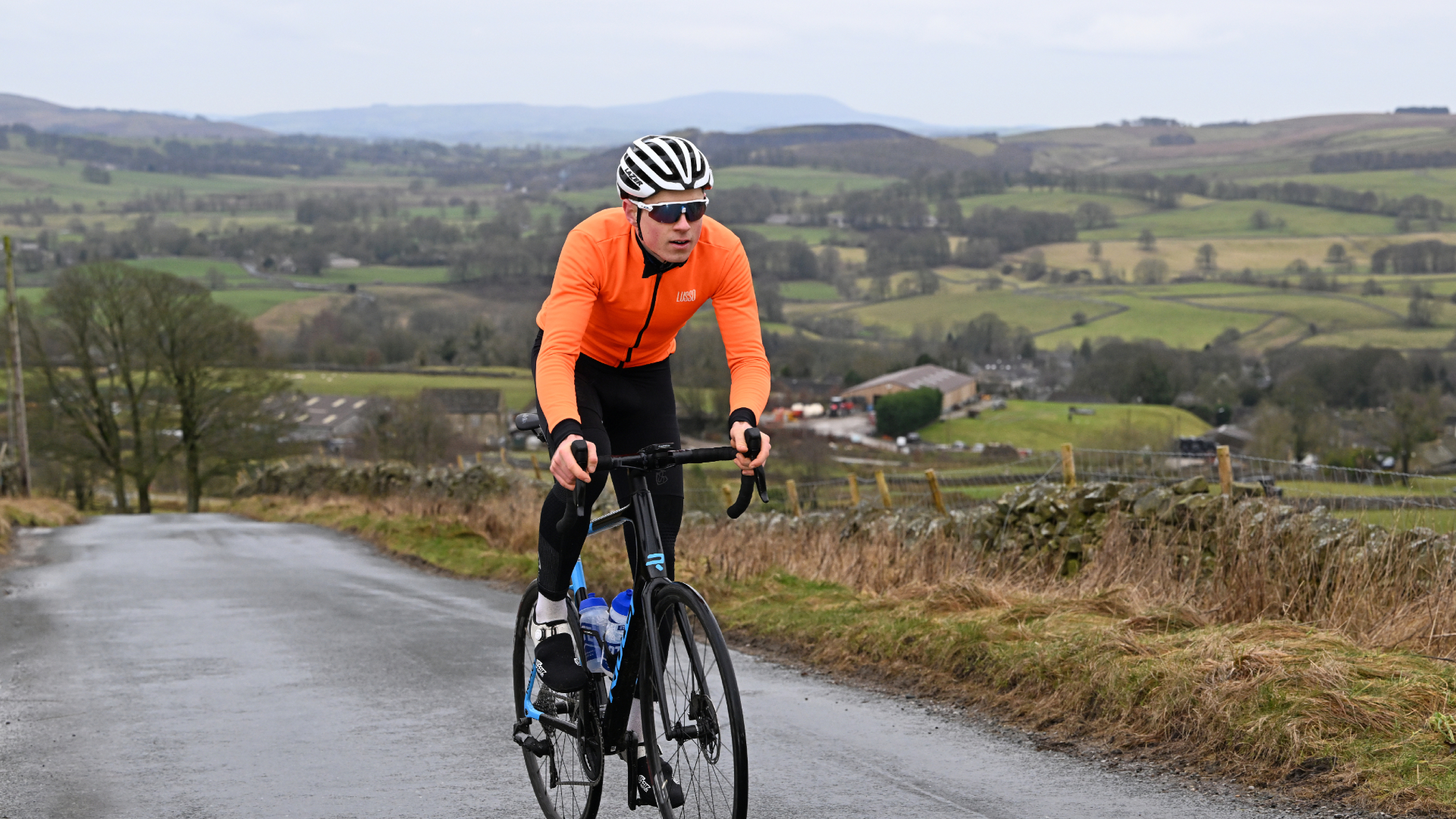
- Riding on the wrong tires
- Disregarding the bike wash/cleaning regime - or just getting it wrong!
- The wrong lube/not enough lube/too much lube
- Riding on worn out or contaminated brake pads
- Dirty/worn bar tape
- A lack of fenders/mudguards
- Misunderstanding tubeless or how to fix it on the go
- Help fellow cyclists, and always ride prepared

As a mechanic, I’m in the unique position of seeing a multitude of quirky hacks, bodges and techniques that customers attempt to use to keep them riding through the winter months.
While some are just a bit silly, some of these honest mistakes can lead to problems further down the line. The good news though, is that correcting all eight of them can save you money, and improve your riding experience.
Here are the top eight customer mistakes I see every winter...
Riding on the wrong tires
I know that for many, tire choice is a very emotive subject, but bear with me. I’m not going to tell you which brand to buy because we all have our own personal favourite and I’m not even going to tell you to go tubeless (more of that later)! However, I will say that summer road race tires are a world apart from winter training tires.
Almost all the popular brands make a summer race tire, a hardshell type puncture-resistant tire and something in between, designed for bad weather - this third option usually uses the same outer rubber as the race tire, coupled with a stronger carcass providing you with the extra protection that you need during the winter, while maintaining a good level of grip. It’ll be labelled something like “4 season”, “365”, “Control”, etc.

A summer race tire will perform brilliantly until, *pop*, it doesn’t - and no one wants to be fixing a puncture with cold wet hands, whilst simultaneously becoming less popular with their freezing mates.
Meanwhile, hardshell tires are great for commuting and offer the best puncture protection, but as you add more layers of protection you start to lose all the flexibility that makes the tire grip, deeming them equally unqualified for the job.
So, do yourself a favour and buy some proper all-weather/wet-weather/4 seasons tires that are flexible enough not to alter the ride too much, but add a little bit more insurance!
Disregarding the bike wash/cleaning regime - or just getting it wrong!
Learn to wash your bike properly. Again, don’t be offended, we see these mistakes all the time, invariably from seasoned riders!
What really gets my goat is when a rider turns up on the club ride with a dirty filthy bike and then says, “I don’t wash it because it’ll just get dirty again”. I really have to bite my tongue... It’s not just my inner bike snob getting out either (well not solely), it’s mostly because your bike will wear out and cost you money very quickly if you don’t give it some basic TLC.
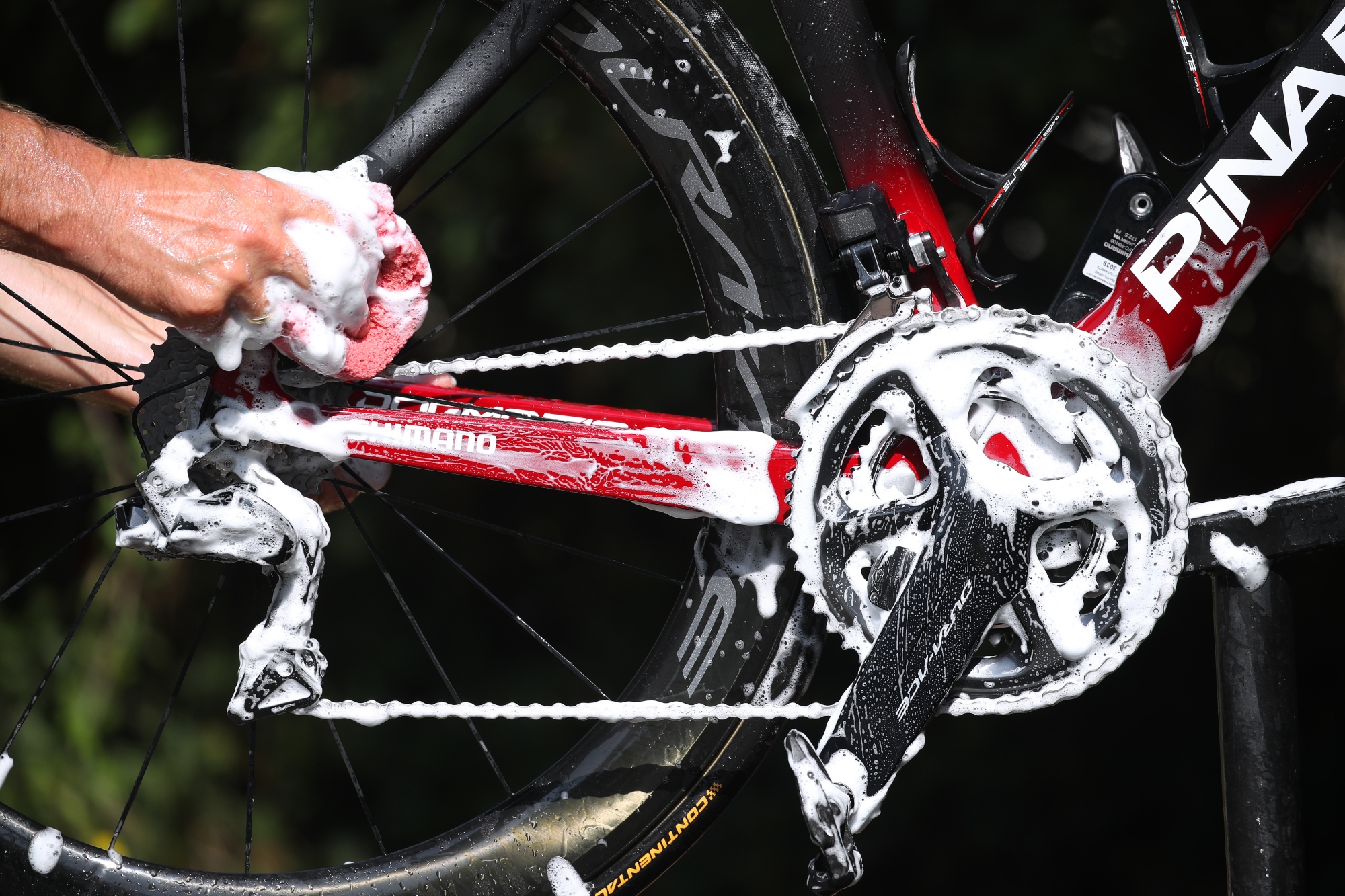
Rear mechs, braking surfaces and pads, bearings, chains, cassettes and chainrings will all suffer badly after a few wet cruddy rides in the UK. This is not due to the conditions themselves but the cleaning regime.
A simple, quick wash, dry and re-lube will save you hundreds, if not thousands, of pounds over a bike's life, and it doesn’t need to take long. A blast with a garden hose, before your shower, and then a dry and re-lube after it, is by far the most simple way and should take less than five minutes. And remember, a clean bike is technically faster so you’ll get more KOM/QOMs too!
The wrong lube/not enough lube/too much lube
Wet lubes are designed (most of the time) for wet weather riding, but more isn’t always better. Too much lube will quickly become saturated with grime, turning into a paste that will wear your drivetrain out rather than protect it due to all the dirt suspended in the lube.
Similarly, too little lube is no good either, as you simply won’t get the protection/performance that lube should provide, and soon enough you’ll see surface rust on your chain links.
The modern-day hot wax approach, in my opinion, can be a no-go despite what you may have been told. Older-fashioned wax drip lubes are actually okay in winter conditions as the wax is designed to flake off as you ride. The downside of this is you’ll need to replace the drip wax more often, but it will stay nice and clean if topped up.
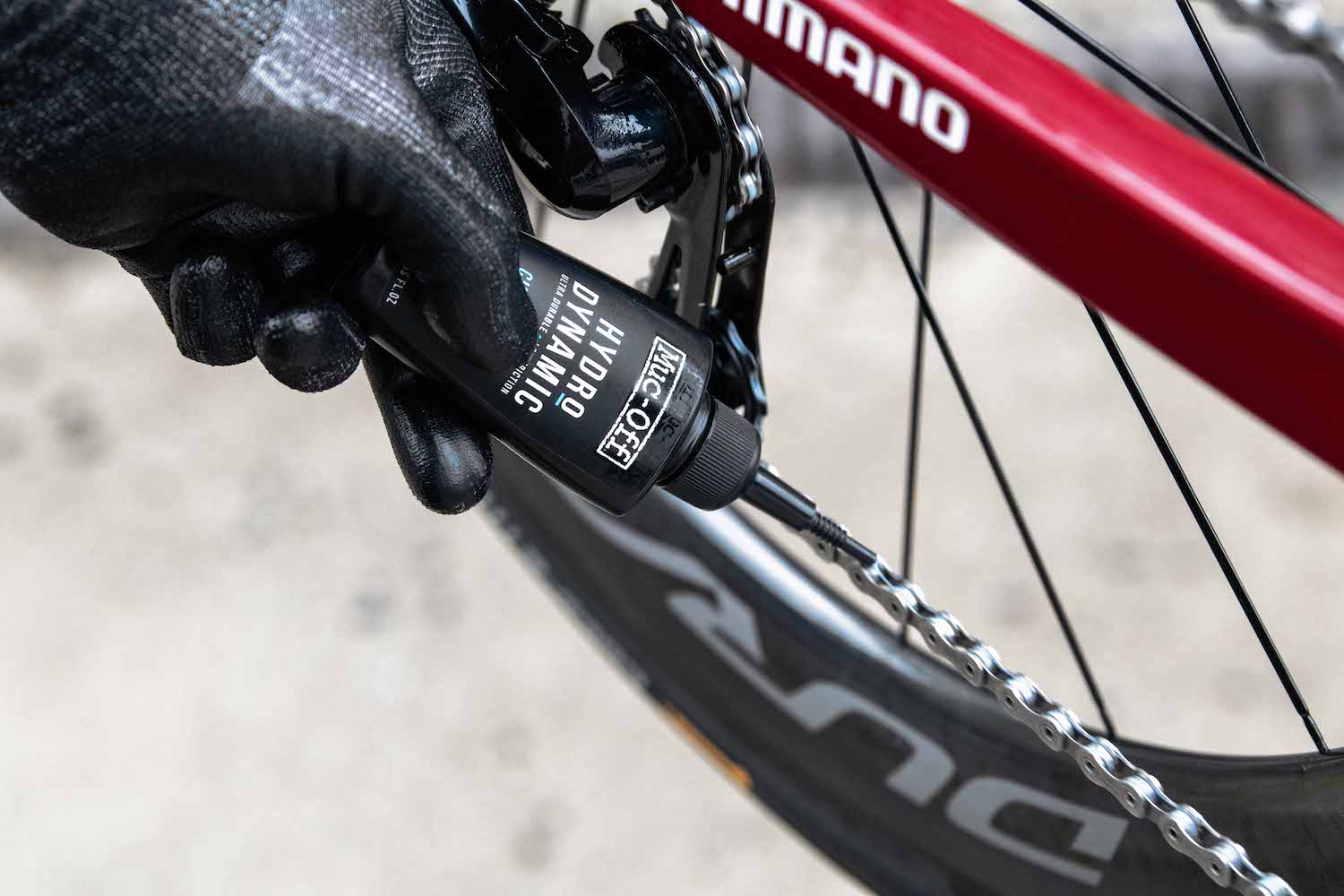
However hot wax really doesn’t work as it relies upon recoating in all but the driest conditions and also won’t handle cold temperatures well. Therefore you really need to find a nice all-conditions/wet lube and apply a nice thin even coat every 2-3 rides. After repeating this process a few times fully degrease your chain and drivetrain, dry everything out, and reapply a fresh thin coat of wet lube.
Riding on worn out or contaminated brake pads
This applies to both rim and disc brakes and can lead to some proper horror stories, so listen up!
I think everyone reading this will understand why this is dangerous, which only goes to make me all the more surprised when I see disintegrated brake pads come into the shop. The worst case was someone who’d worn through the pad material, all the way through the backing material and into the brake piston. He said, “it was making a grinding noise”, and he wasn’t wrong.
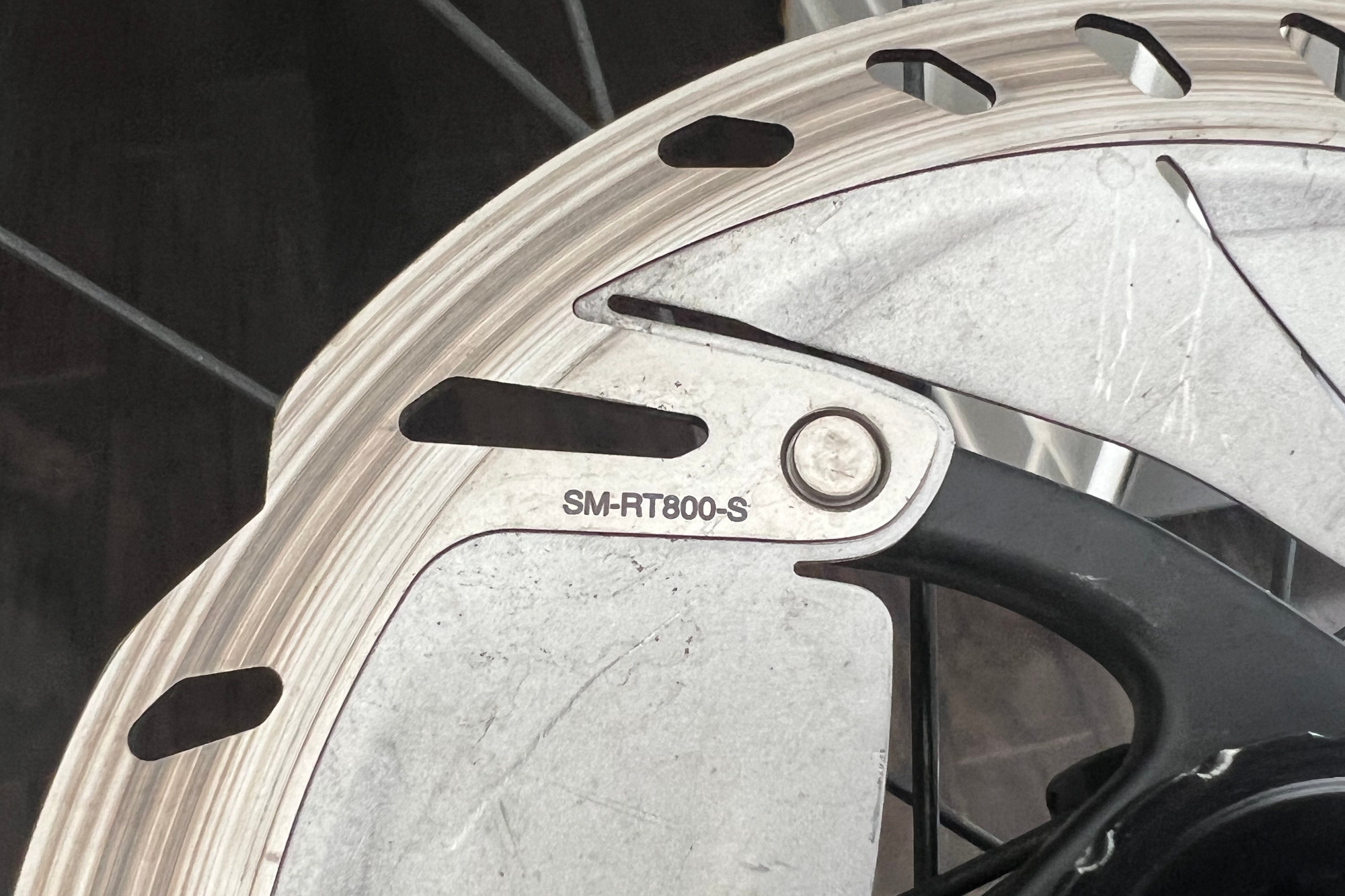
avoid mucky rotors like these!
But even if it hasn’t gone that far, it's bound to be making a racket if you get any metal-on-metal contact, and of course that leads to issues if your riding buddies hit the anchors in front of you.
Contaminated pads are similarly dangerous - and believe me, there is not a “hack” that will successfully clean contaminated pads, once they’re dead, they’re dead. Take some time to learn about your braking system and to recognize when the pads are worn, and even learn how to correctly replace them yourself as it can be a pretty rewarding job for a home mechanic if done correctly. If in any doubt, leave it to the pros.
Dirty/worn bar tape
This one isn’t exactly a safety issue, but it does speak volumes about the rider. Put simply, would you turn up to the club ride with dirty clothes? If the answer is yes, it’s not going to just be me judging you. If the answer is no, try to think about your bar tape in much the same fashion as your expensive clothing - it gets sweaty, dirty, and eventually ripped in just the same way as your jersey, gloves, or tights and needs cleaning, and eventually replacing.
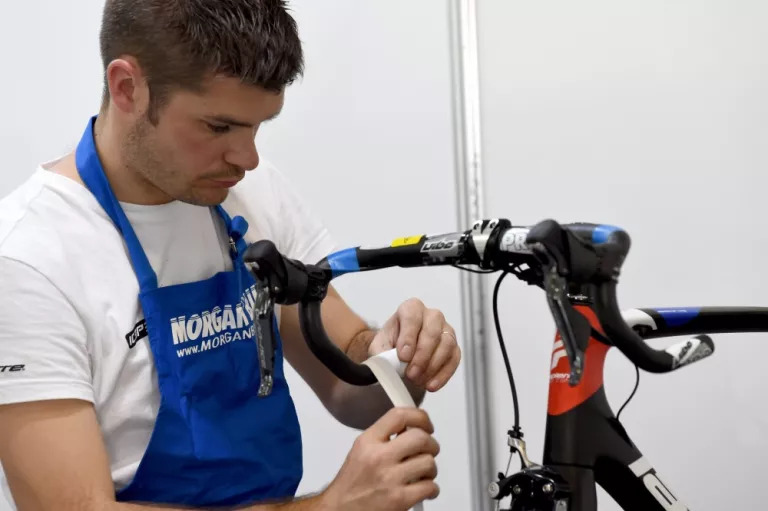
A bit like brake pads this is an easily achievable job for a home mechanic. Simple cork tape is cheap and you could practice by buying a different colour every few months. It’ll make your bike look and feel new every time you replace it and avoid the looks of distain from mechanics around the world.
A lack of fenders/mudguards
Possibly one of the most frequently overlooked winter habits and a constant cause of frustration for anyone who ends up on your wheel, is a lack of fenders/mudguards.
Mudguards work on multiple levels. Firstly they keep your bike clean, which as we mentioned before, can save you both time and money. Secondly, they keep you clean, greatly decreasing the amount of ingested road grime, and oftentimes saving you from battling oil stains on your favourite winter jacket!
Thirdly and most importantly they keep your clubmates clean. I suppose you could argue this could save you money in coffee tax at the cafe, but really it comes down to good group ride etiquette - and let's face it, we all want to keep those who half-wheel us on our side.
Misunderstanding tubeless or how to fix it on the go
I'm never one to miss a great tubeless discussion - and buckle up, because my opinion on the matter tends to throw the cat among the pigeons when it comes to riding tubeless in winter.
Do I ride on tubeless? Yes. Would I go back to tubes? Absolutely not. Should you convert to tubeless for winter? No!... Wait, what?...
My thinking here is simple and logical - no matter what tire you use this winter, you will almost definitely get a puncture at some point if you ride any significant mileage. Can you deal with this at the side of the road? If the answer is yes, then ride tubeless (if you want too), but if the answer is maybe or no, stick with what you know you can handle - depending on the wheel/tire combination, a tubeless puncture fix can be severely frustrating...
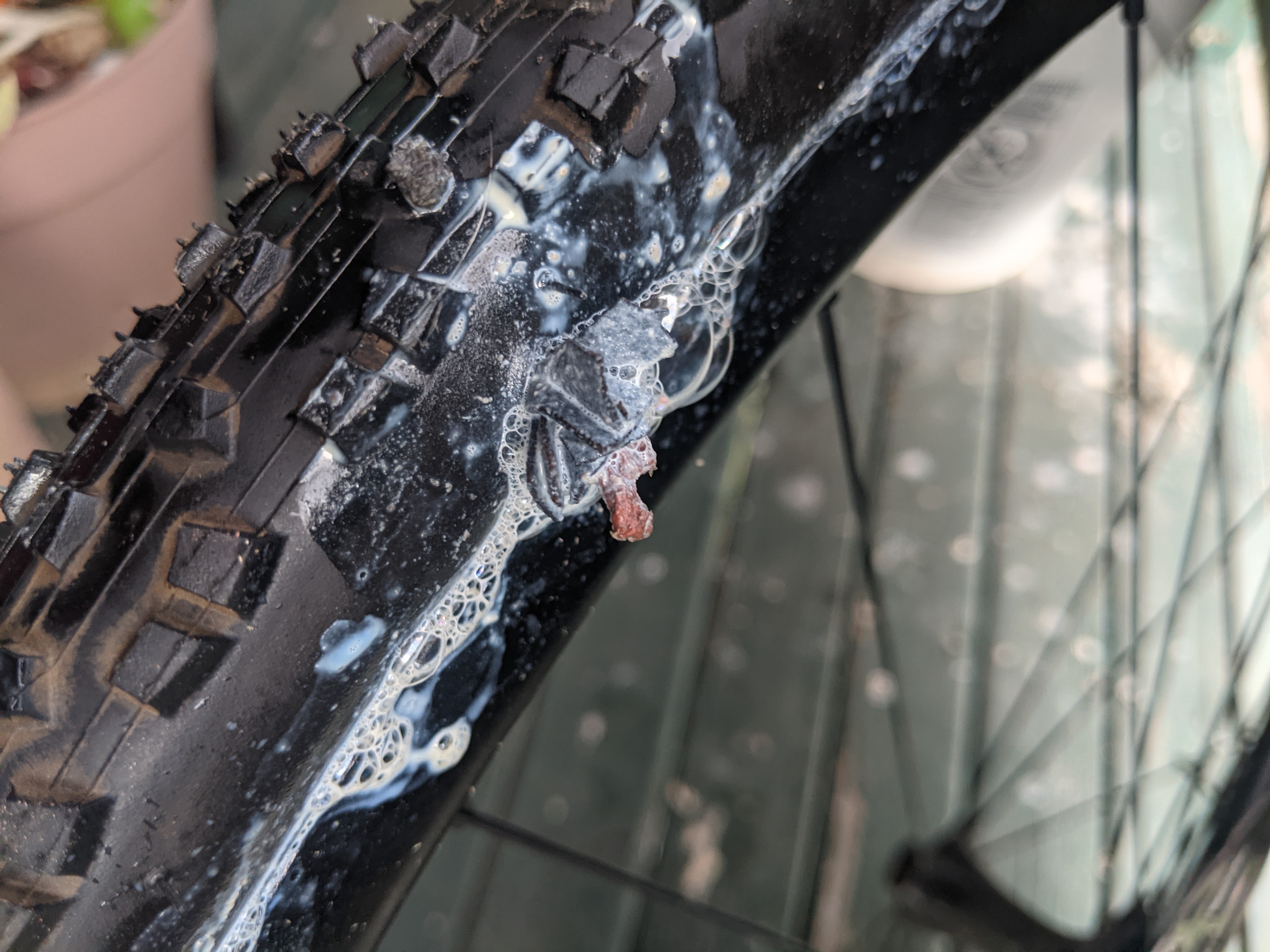
Even with wet cold hands, I know I can change a standard tube over and check the tire for thorns in a matter of minutes, thanks to years of experience. The crux of the issue is people's understanding of why tubeless is better and without going down a rabbit hole I’ll simply say that tubeless is NOT about puncture protection, that’s merely a happy by-product of a system that is designed to improve riding performance.
Think about that because many roadies misunderstand tubeless. In many instances tubeless can present more problems than solutions for winter riding so if you’re interested I’d thoroughly recommend trying it out in summer, rather than winter.
Help fellow cyclists, and always ride prepared
Probably the worst thing I see is people stranded by the side of the road with either no tools, no understanding of how to use them, or not being able to use them because they’re frozen to the core!
Equally surprising to me is that on the rare occasion that I’m on the side of the road helping someone fix something, other riders ride past without offering any assistance at all (sometimes not even a hello)! Even before I joined a club, my riding buddies taught me that if you see someone on the side of the trail or the road, you slow down and ask if they’re okay - you might just save them a very costly cab fare.
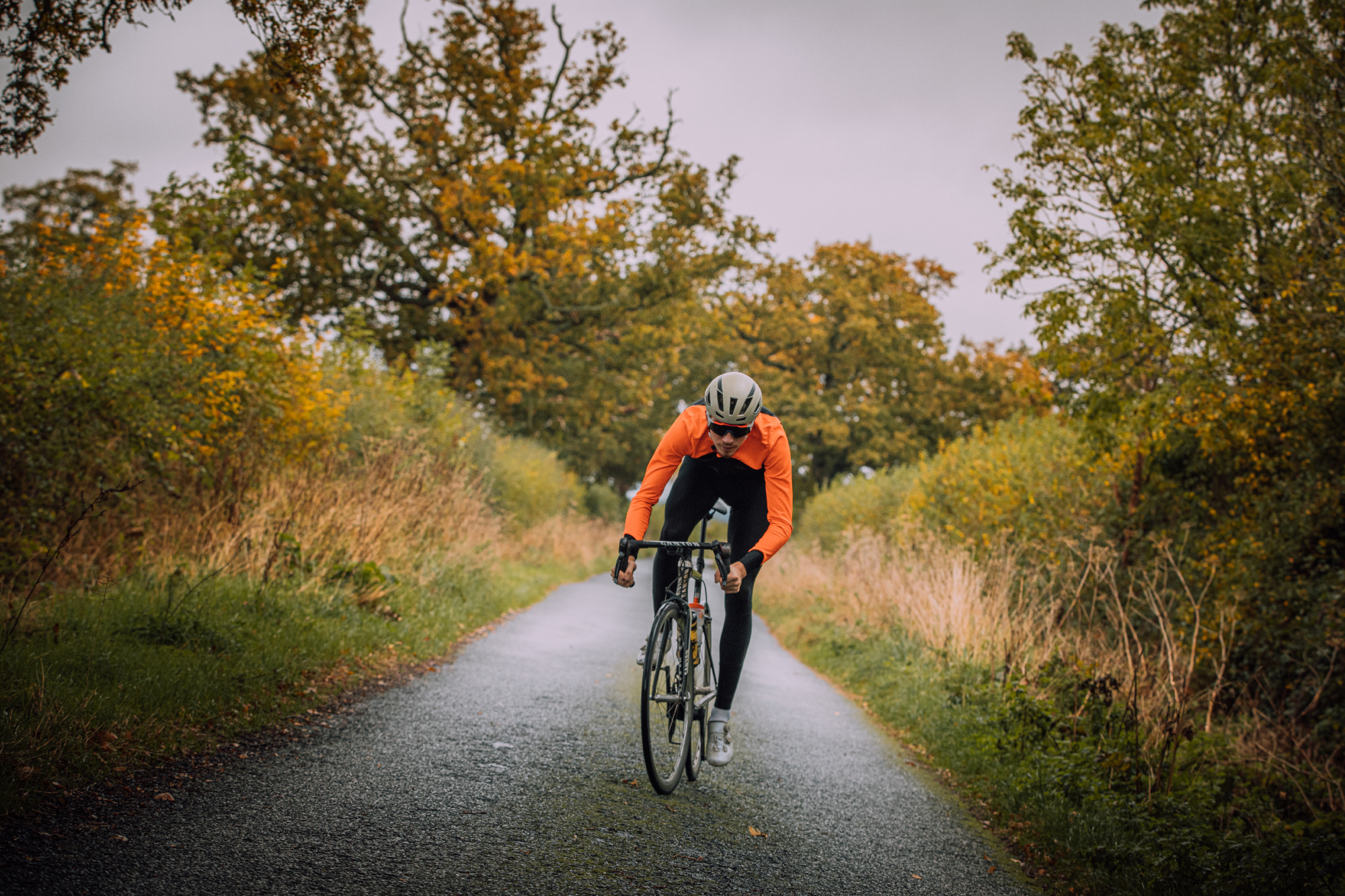
Even if you can’t help, you may be able to offer a tool or a tube to someone who could use it to get home. But it’s also important to learn to help yourself and many workshops and shops offer one-to-one sessions or club nights where you can learn some basic skills and buy some basic tools.
Knowledge doesn’t weigh anything and you can take it with you on any ride, trip or adventure!

Thank you for reading 20 articles this month* Join now for unlimited access
Enjoy your first month for just £1 / $1 / €1
*Read 5 free articles per month without a subscription

Join now for unlimited access
Try first month for just £1 / $1 / €1
Get The Leadout Newsletter
The latest race content, interviews, features, reviews and expert buying guides, direct to your inbox!

Glen’s an ex-racer who still finds time to ride bikes for SDWRacing. He started racing in 1998, initially specialising in XCO and Solo 24-Hour Mountain Bike. He became a mechanic in 2002, working in shops and also for professional race teams. During this time he spent more time racing cyclocross and road, and then also time trials. In 2013 he built his first bespoke frame and then spent several years at Roberts learning the art. Since then he’s designed, tested and now sells frames/bikes to the public as part of his ÆIGHT brand.
-
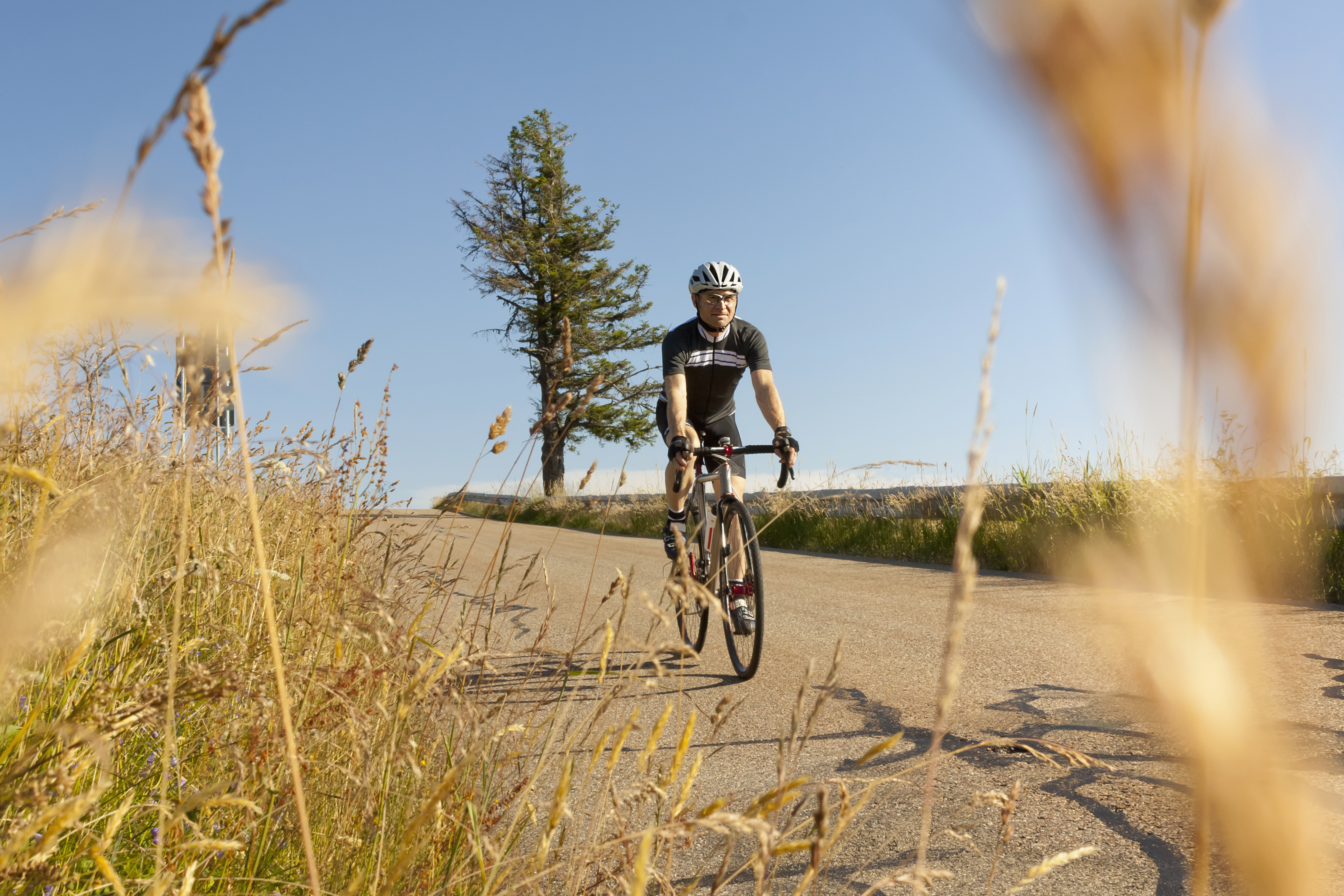 Hayfever and your riding: how to combat it as the pollen strikes
Hayfever and your riding: how to combat it as the pollen strikesExplanations, medications and holistic measures to make your spring and summer riding more enjoyable
By James Shrubsall
-
 I went to Paris-Roubaix Femmes and was shocked at how it is still treated as secondary to the men’s race
I went to Paris-Roubaix Femmes and was shocked at how it is still treated as secondary to the men’s raceThe women’s version of the Hell of the North is five years old, but needs to be put more on equal footing with the men
By Adam Becket